

$16.00
When Dr. Robert Pamplin, one of Oregon’s most forward-thinking philanthropists and businessmen, purchased the historic...


$24.00
Hailing from the heart of France's Loire Valley, this "cuvée" is crafted from 100% Cabernet...


$16.00
Winemakers Franco De Biasio and Michele Faccin craft the Cleto Chiarli Brut de Noir Rosé...


$28.00
Crafted by winemaker Wells Guthrie, this wine is an embodiment of the earthy, sweet beet...

We've all been at a fancy restaurant and seen a waiter or Sommelier trot past us with an elaborate, glass contraption that looks like it belongs in a museum. Most likely they’re en route to decant an expensive bottle of wine for a patron. But is the process of decanting all show? And if not, when should a wine be decanted and what exactly does it DO to enhance our enjoyment of wine?
The process of decanting dates back to ancient Rome when wine was fermented in large containers called amphorae. Decanters were used to siphon wine out of amphorae to bring to the table for serving. Since an amphora generally contained a fair amount of sediment at the bottom, the decanting vessel also served to separate the wine from the sediment which, although it poses no health risk, is not very desirable to drink.
Over the years, decanters have been made of various materials including silver, bronze, gold and terra cotta earthenware. During the Renaissance, the Venetians introduced the style of decanter we are most familiar with today. It is typically made of glass and features a thin neck which expands into a broader base which maximizes the wine's oxygen exposure.
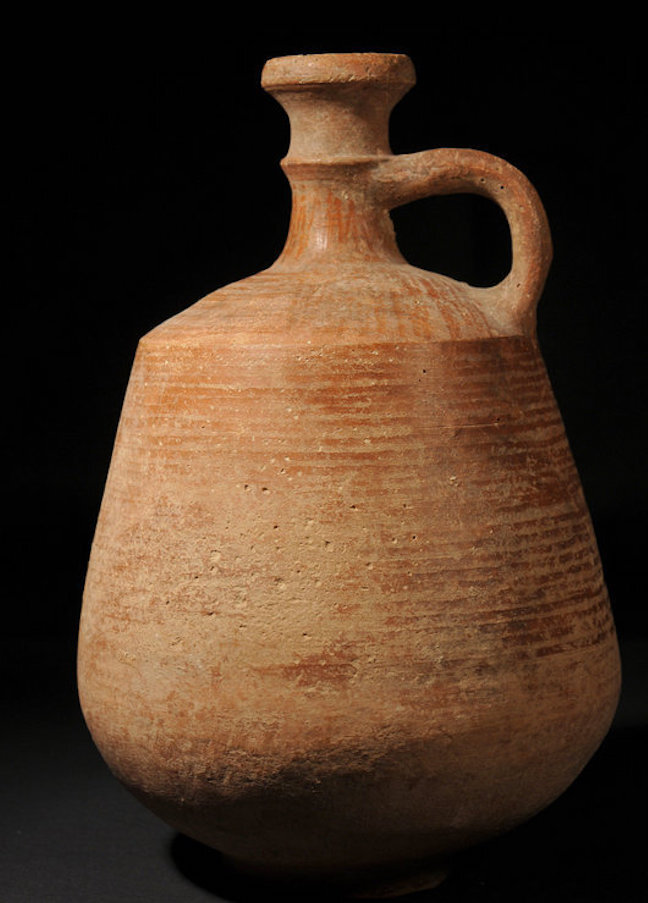
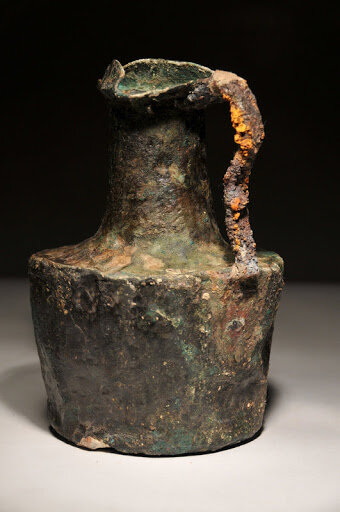
Today, a decanter serves two primary purposes: (1) to separate older wines, usually red wines or Port, from any sediment at the bottom of a bottle which occurs naturally as wines age, and (2) to aerate younger wines, both white and red, which tames their tannin and helps them "open up," and become more expressive and approachable.
While most tannic, young red wines such as Cabernet Sauvignon, Cabernet Franc, Syrah, Nebbiolo, Sangiovese, Malbec, and Merlot will benefit from decanting, older wines can be more fragile. In fact, it's a good idea to taste an older wine (10-15+ years old) before making the decision to decant. If you like the way it tastes right out of the bottle, you may want to avoid the decanting process altogether. If the wine is very "closed" or unexpressive and/or contains a significant amount of sediment, then you will probably want to proceed with decanting it.
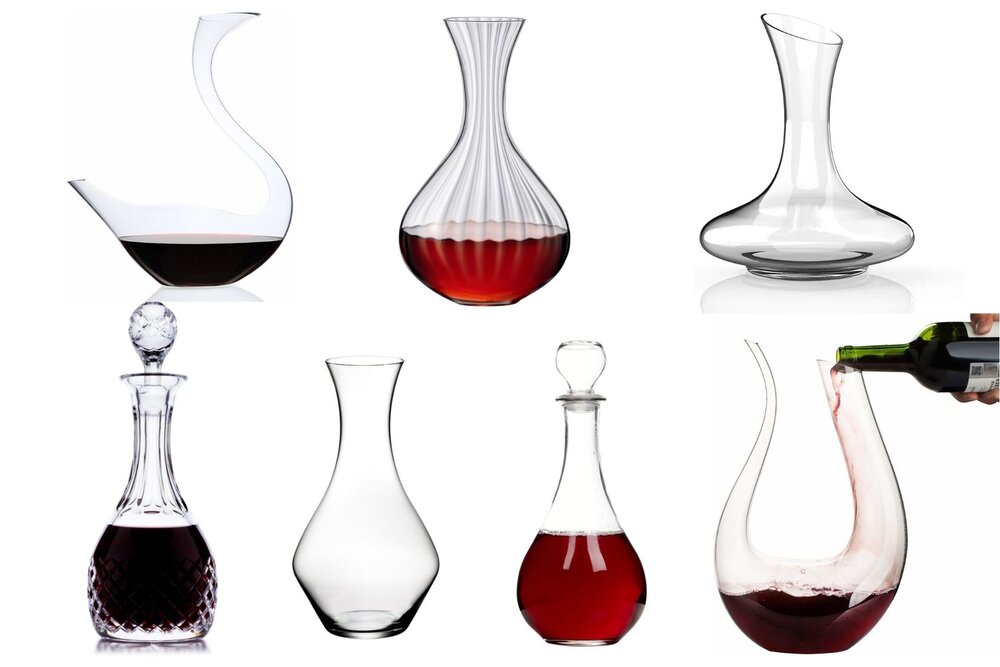
The process of decanting is quite easy to perform and you don't need a fancy decanter to do it - a big glass vase or water pitcher will work just fine! Also, if you only plan on enjoying a glass or two, the Vinturi Wine Aerator is also great choice at a great price. If you would like to go ahead and decant a bottle yourself, just follow the steps below but be sure to take note, decanting a young bottle is different from decanting an older bottle:
If the wine(s) you want to decant are stored on their side in a cellar or wine fridge, be sure to stand the bottle(s) upright for 24-48 hours prior to decanting. This allows the sediment suspended in the liquid to settle to the bottle of the bottle.
Select the decanter (or glass vase or pitcher!) you'd like to use and make sure it is properly cleaned and dried. If you're thinking of investing in a decanter, we really like the ones from Riedel. We've had ours for over 12 years and it does a fabulous job and is easy to clean too.
Remove the capsule and cork from the bottle of wine and wipe any dust or schmutz from the neck and top of the bottle.
If you're decanting a young bottle of wine (under 5 yrs), invert the opened bottle of wine over the decanting vessel and let it flow freely into the decanter. The more "sloshy" this process is, the better (without spilling the wine of course). Young wines really benefit from that infusion of oxygen! As for timing, you can decant young tannic wines up to 2-3 hours before serving, however, if you'd like to experience more of the wine's natural evolution in the glass (as I like to do) you can decant it just before serving.
If you're decanting an older bottle of wine (10+ yrs), place a candle or the light from your iPhone under the neck of the bottle as you slowly and steadily pour the wine in one continuous stream from the bottle into the decanter. Once you begin to see sediment approach or enter the neck of the bottle - slow your flow or stop pouring altogether depending on how much there is. You don't want any sediment getting into your freshly decanted wine!
Once you've poured the wine into the decanter, discard the bottle and any dredges at the bottom and enjoy your decanted wine!
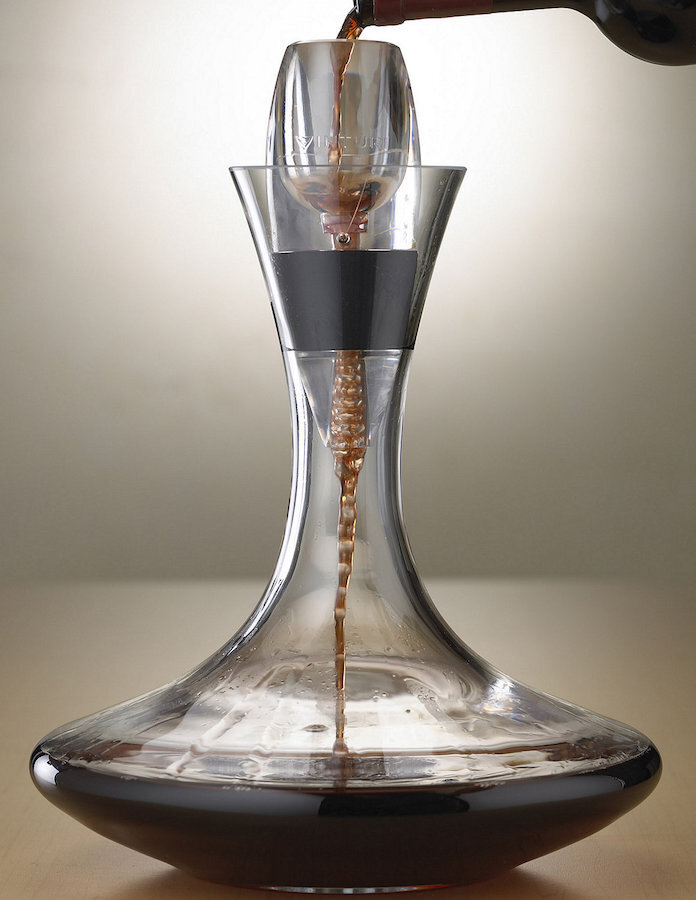
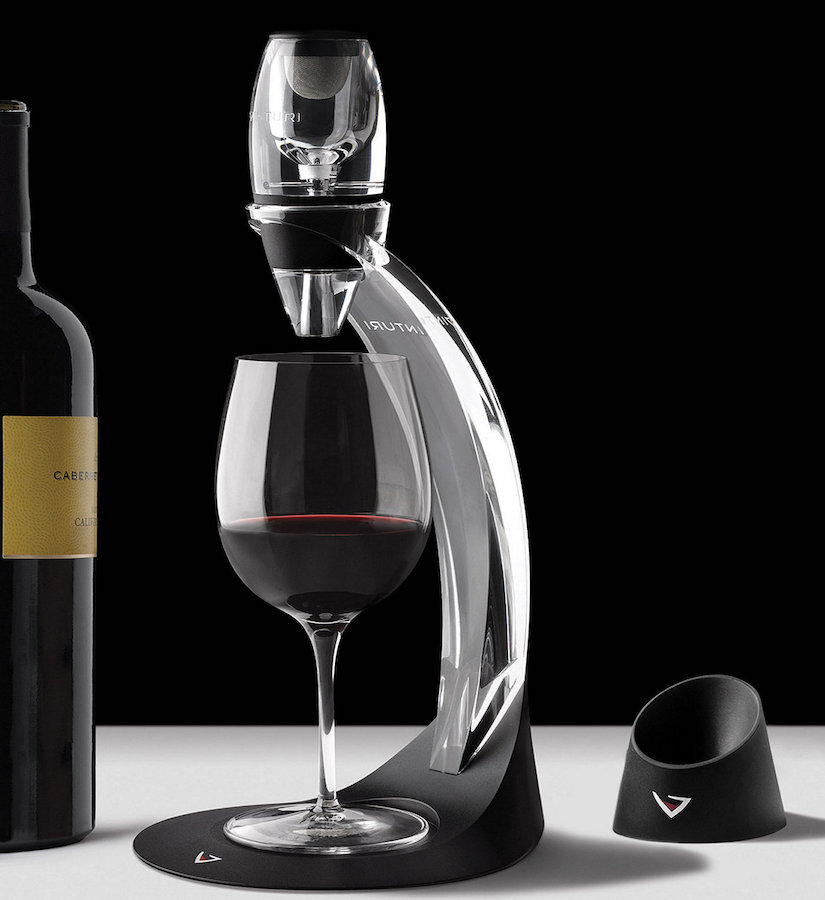
Other twists on decanting:
For especially youthful, tannic red wines you can "double-decant" them by pouring the wine into a decanter and then right back into the bottle - double the decanting, double the fun!
If you're feeling adventurous, you can also "hyperdecant" your wine (young red wines ONLY!) utilizing a technique introduced in the revolutionary Modernist Cuisine cookbooks (see video below!). Simply empty the bottle of the wine into a blender and blitz for 30-60 seconds. Wait a minute or two for the foam to subside and enjoy!
In order to expedite decanting, you can combine a Vinturi Wine Aerator with a decanter and pour the wine through the device into the glass decanter in order to speed things up.
I hope you enjoyed our latest Wine Word of the Week and if you have any “wine words” you’d like to learn more about, please feel free to share them in the Comments section below. To see previous installments of this segment, please click here and, as always, thanks for reading!

With your New Year's Eve hangover in the rear view mirror, along with some of your more stringent resolutions (buh-bye #DryJanuary), it’s time to start planning for the future! To help with the vinous portion of your plan, I’ve got 5 Fabulous New Year’s Wine Resolutions to guide you into the New Year:
MIX IT UP: Because the world of wine can be confusing it's often easier to just stick with the same wine day in and day out - but how boring is that?!? To break out of your rut, why not vow here and now to sample a different wine every week or at least every month? We make it easy at Highlands Wine Shoppe where you can stop by and sample any of the wines on our tasting machines. We always have 16 selections available by the glass (or taste!) and our amazing staff can help guide you towards your new favorite for 2023.
START A WINE COLLECTION: If you've been drinking wine long enough to have a favorite wine region and/or producer it might be time to sock a few bottles away for a later date. Aged wine can be such an enjoyable experience but collecting wine does NOT mean you have to have a custom built, 5,000 bottle cellar. In fact, far from it! From an 18 bottle, under the counter wine fridge to a 150+ bottle, free-standing unit roll with whatever suits YOUR needs. This piece of equipment is VERY important since varying temperatures, mechanical vibration and light exposure are arch-enemies of wine. And stay tuned for more information on our upcoming Collector’s Series of wine tastings that can guide you towards some great selections!
HONE YOUR TASTING SKILLS: Whether you’re a budding wine enthusiast or an aspiring Somm to really learn about wine you need to use a consistent tasting approach that utilizes ALL five senses. This sensory information provides valuable insight into a wine's place of origin, grape variety and "terroir” which are all critical factors when learning about and understanding wine. So if becoming a better taster is something you’re interested in achieving this year, please click here to be notified of our upcoming events and classes - or - we’d be happy to schedule a private class for you and your friends.
DRINK MORE SPARKLING WINES: The focus on sparkling wine/Champagne consumption around special occasions like New Year's Eve leaves the majority of the year unbearably bubbly-free. While Champagne's price tag may limit it to more of a special occasion wine, there are many sparklers from around the globe that are priced for everyday consumption. Wines like Prosecco, Cava and Crémant are perfect for enjoying on a Tuesday night or sipping over lunch with a friend. As an added bonus, sparkling wines also have less calories and alcohol than a glass of Chardonnay or Cabernet Sauvignon - affordable, delicious AND figure-friendly - what's not to love about that?
FOOD + WINE INSPIRED TRAVEL: Our post-pandemic world, in between variants at least, is the perfect time to visit that wine region you’ve been dreaming about. Whether it’s an overnight trip that’s closer to home or a long haul flight to an Old World wine region, put your planning hat on, do your research + get ready to explore. For some food and wine-inspired travel inspo from our travels to wine regions near and far, please check out my post 5 Glamorous Getaways for Food and Wine Lovers.
I hope these suggestions inspire you to further embrace the world of wine in 2023! If you have any other wine-related resolutions I'd love to hear about them, please let me know in the Comment section below.

Easter is fast approaching and this quintessential Spring holiday never ceases to inspire my desire for refreshing, food-friendly wines that pair beautifully with seasonally-inspired flavors.
So if you’re looking for the perfect wines to serve with your Easter feast (and perhaps all season long), here are five of my favorites. They all possess a beautiful balance of fruit and acidity as well as moderate alcohol and tannin that are sure to appeal to a variety of palates and pair perfectly with everything from rack of lamb to Honey Baked Ham!

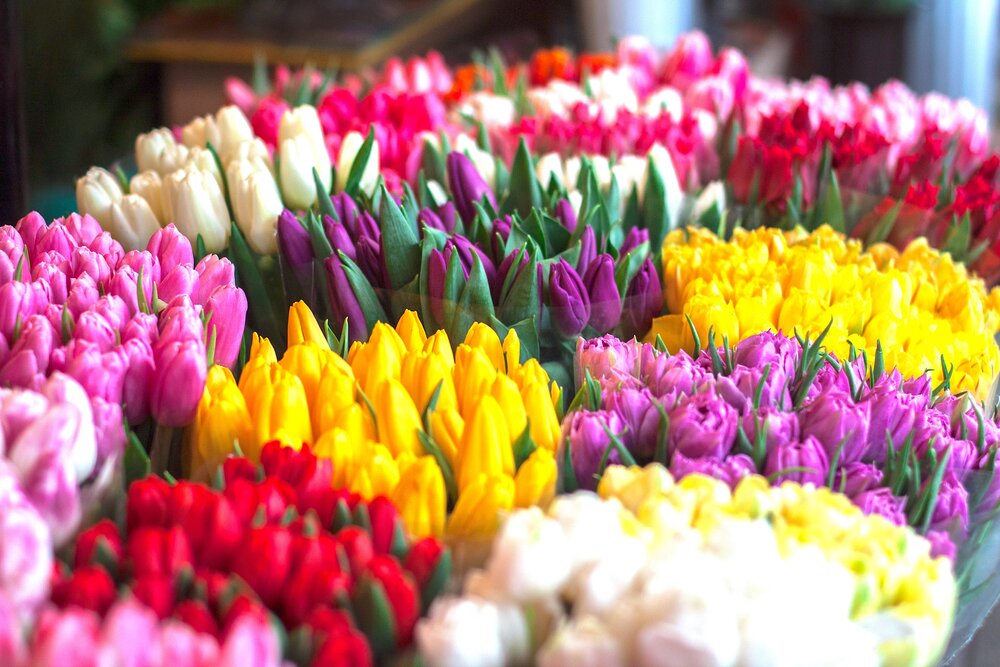
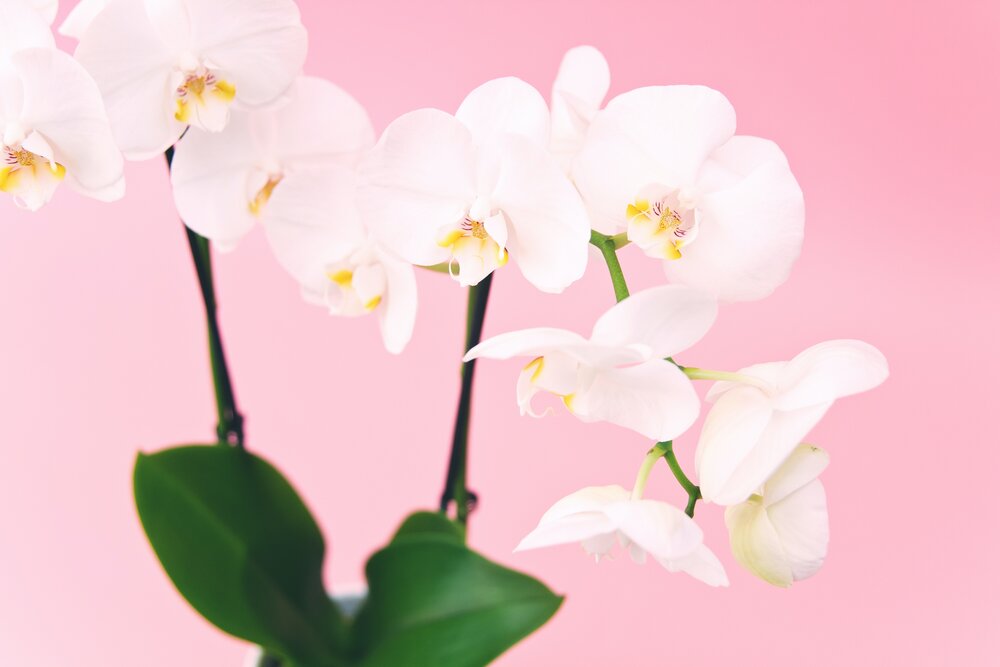
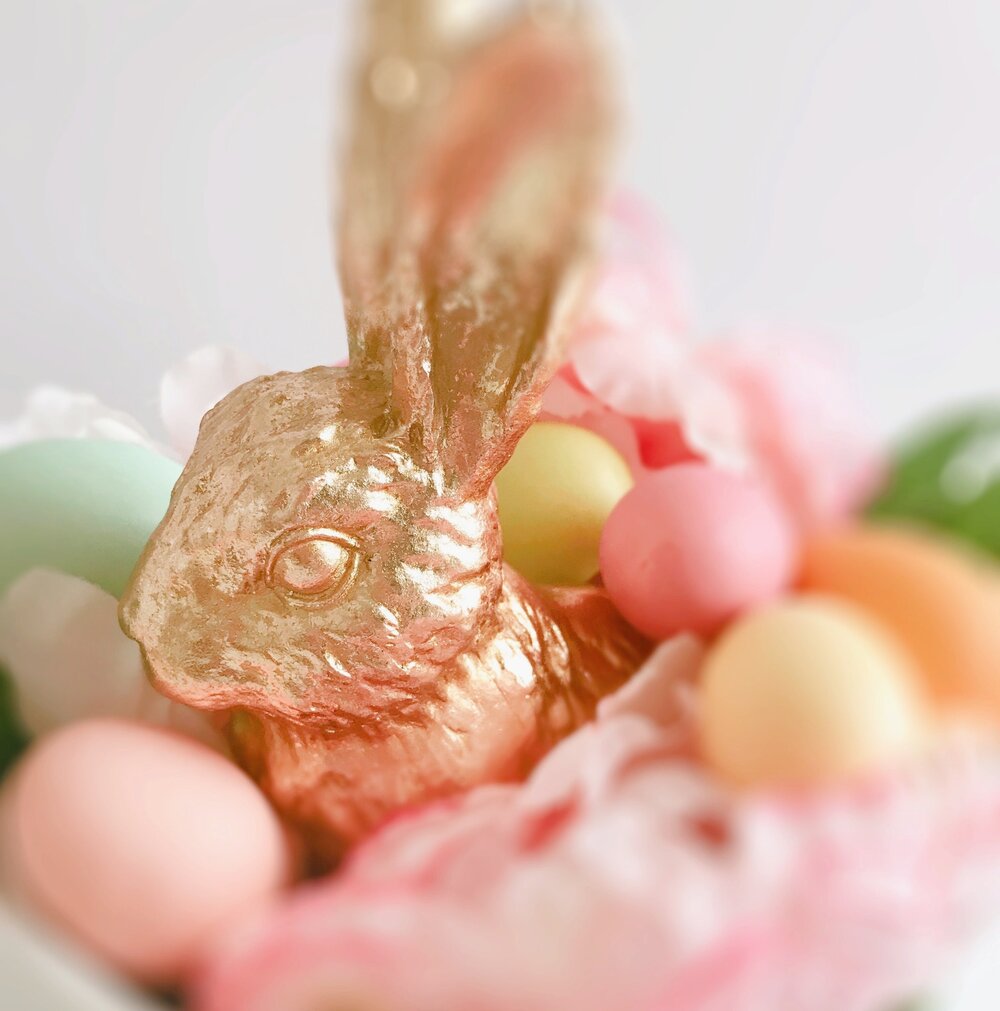
Benvolio Prosecco DOC, Friuli, Italy, NV ($14): Brisk + bubbly with floral-infused aromas + flavors of green apple, citrus + pear, this sparkler is perfect as an aperitif or with brunchy type food. It’s reasonable price point also makes it perfect for Mimosas, Bellinis or other sparkling wine based drinks where you don’t want to mask the classic characteristics of more pricey Champagne.
Yangarra Estate Roussanne, McLaren Vale, Australia ($22): Fresh + fruit-forward, this juicy Aussie gem is 100% Roussanne, a grape indigenous to France’s Rhone Valley. Crafted with a kiss of French oak, Roussanne is known for its rich mouthfeel + lush notes of citrus, honeysuckle + spice. This wine pairs perfectly with Spring salads, seafood and/or shellfish + other lighter fare.
Whispering Angel Cotes de Provence Rosé, Provence, France ($24): This lovely, Provencal-style, DRY rose that kicked off the #RoseRevolution a decade ago is made from a blend of Grenache, Cinsault + Rolle (aka Vermentino) grapes. In hallmark Provencal style, this wine delivers delicate, mineral-infused notes of rosewater, citrus + strawberry and is perfect on its own or paired with any variety of Spring-inspired foods such as ham or lamb.
Georges Duboeuf Jean Descombes Morgon, Beaujolais, France ($22): When it comes to Spring red wines, you simply MUST explore cru Beaujolais. Hailing from the Southernmost region of Burgundy, these fabulous light, fruity reds made from the Gamay grape are known for their fruity aromas + flavors and lack of astringent tannins. They are extremely versatile at the table + pair perfectly with ham + a variety of Spring/Easter dishes.
Copain Tous Ensemble Pinot Noir, Anderson Valley, California ($28): Hailing from Northern California’s Anderson Valley, this wine is an embodiment of the earthy, sweet beet root undertones that are indicative of the region’s Pinot Noir. This medium-bodied wine has vibrant dark red fruit on the nose and palate and delivers pure, focused flavors with a great lift on the finish from the acidity.